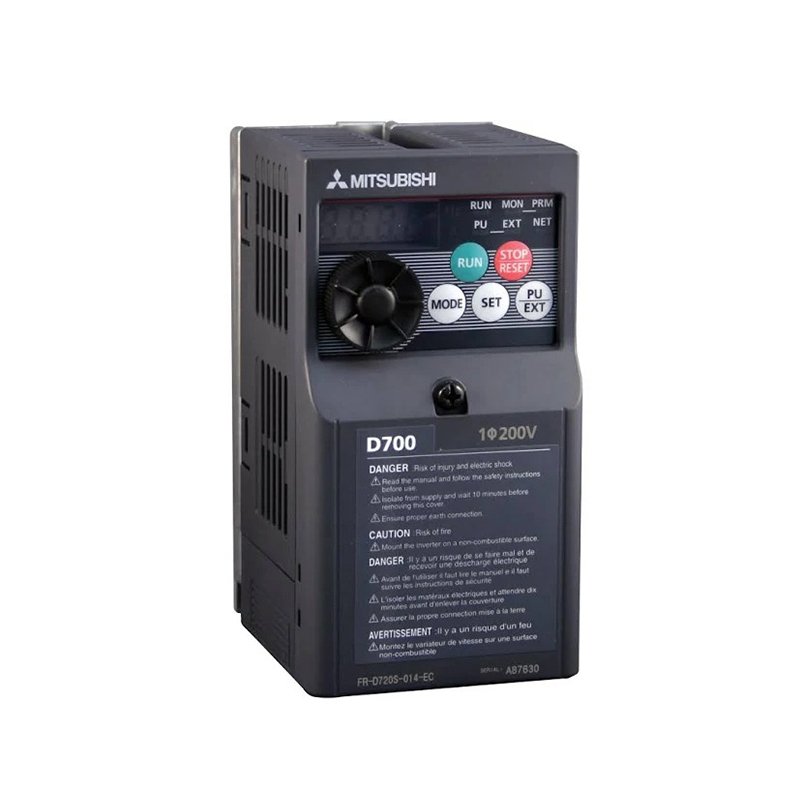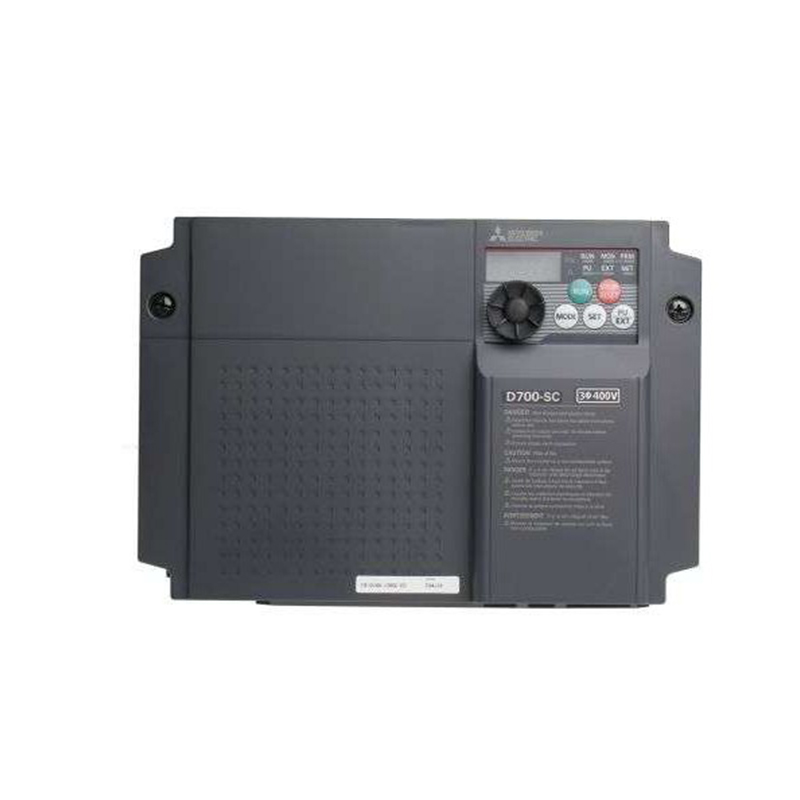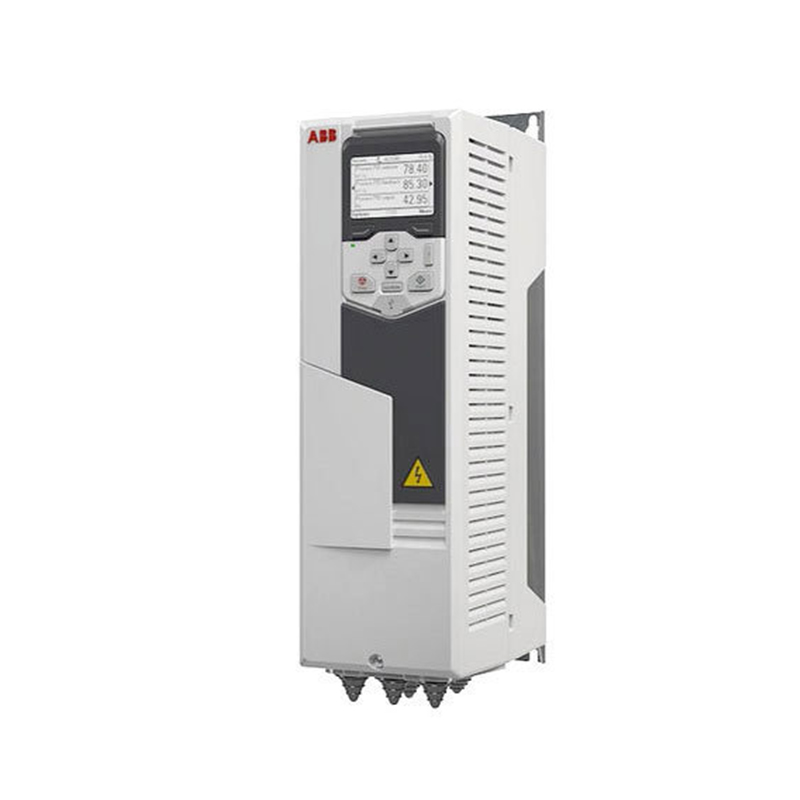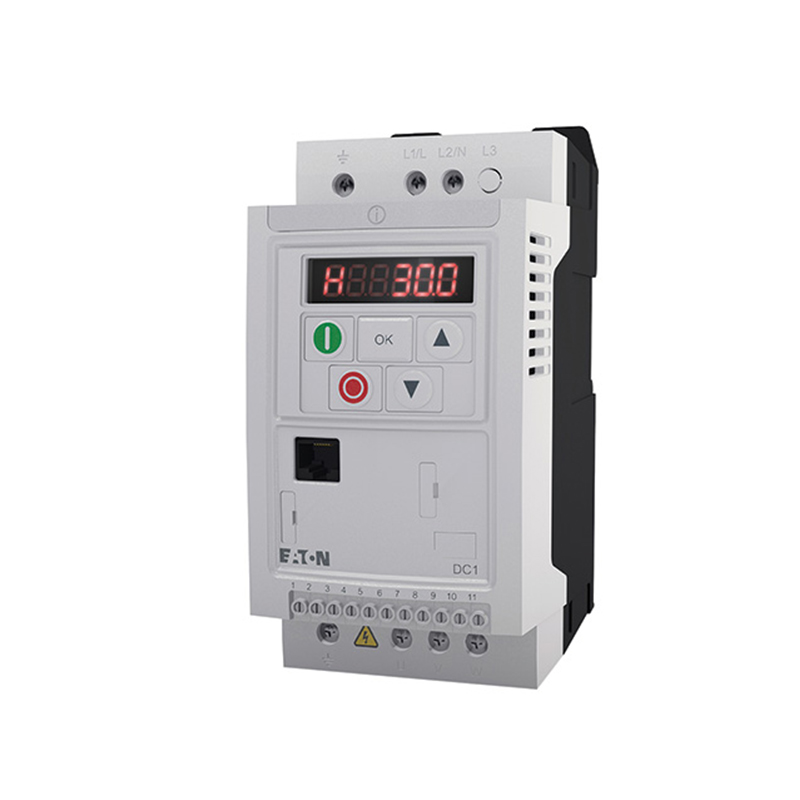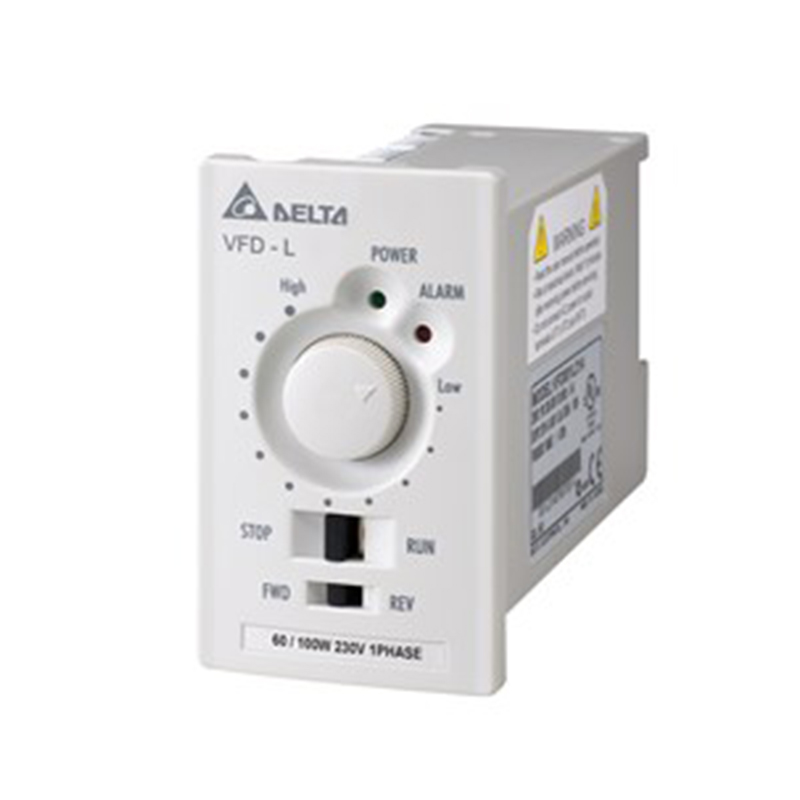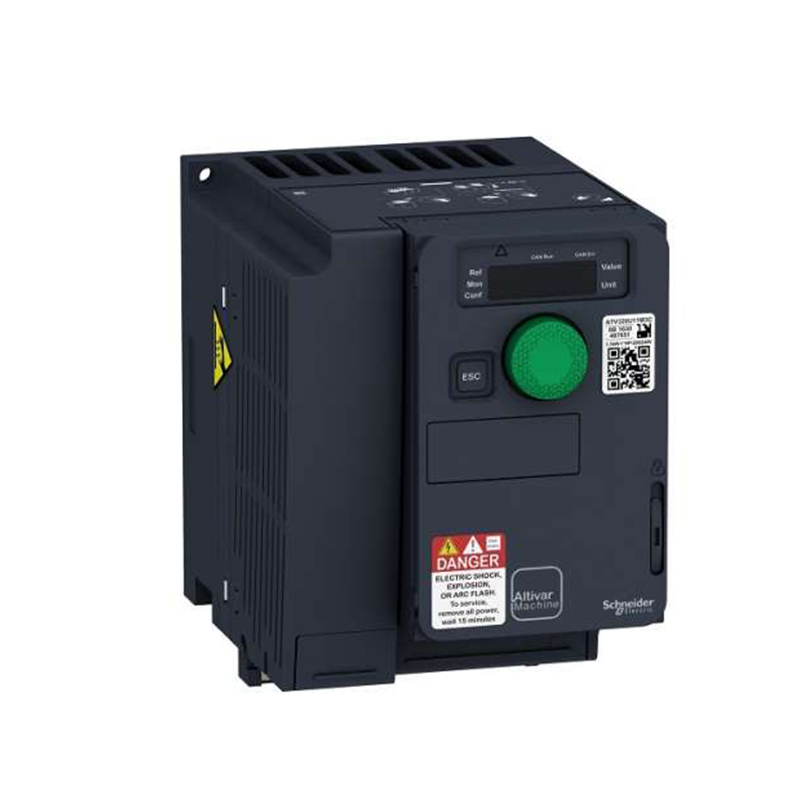Features
- Highly compact design – Reduced installation footprint
- 5 Year warranty – Extra peace of mind
- Safety drive capability – Eliminates the need for an extra contactor for operator safety
- Built-in MODBUS® RTU communications – Seamless integration into control systems
- 60:1 speed range – Fast acceleration of high inertia loads
- Bookshelf mounting capability – Increased installation density allows smaller panel sizes
- Built-in dynamic braking circuit – Allows for simple installation of brake resistors for heavy deceleration
- 150% overload capability – For dependable trip-free operation
Application
- Machine tools
- Textile machines
- Woodworking machines
- Packaging machines
- Electronics
- Fans
- Pumps
- Air compressors
Specification
| Control specifications | Control method | Soft-PWM control/high carrier frequency PWM control (V/F control, General-purpose magnetic flux vector control, and Optimum excitation control are available) | ||
| Output frequency range | 0.2 to 400Hz | |||
|
Frequency setting resolution |
Analog input |
0.06Hz/60Hz (terminal2, 4: 0 to 10V/10 bits)
0.12Hz/60Hz (terminal2, 4: 0 to 5V/9 bits) 0.06Hz/60Hz (terminal4: 0 to 20mA/10 bits) |
||
| Digital input | 0.01Hz | |||
| Frequency accuracy | Analog input | Within ±1% of the max. output frequency (25°C ±10°C) | ||
| Digital input | Within 0.01% of the set output frequency | |||
| Voltage/frequency characteristics | Base frequency can be set from 0 to 400Hz. Constant-torque/variable torque pattern can be selected | |||
| Starting torque | 150% or more (at 1Hz)…when General-purpose magnetic flux vector control and slip compensation is set | |||
| Torque boost | Manual torque boost | |||
| Acceleration/deceleration time setting | 0.1 to 3600s (acceleration and deceleration can be set individually), Linear and S-pattern acceleration/deceleration modes are available. | |||
| DC injection brake | Operation frequency (0 to 120Hz), operation time (0 to 10s), and operation voltage (0 to 30%) can be changed | |||
| Stall prevention operation level | Operation current level (0 to 200%), and whether to use the function or not can be selected | |||
| Operation specifications |
Frequency setting signal |
Analog input |
Two terminals
Terminal 2: 0 to 10V and 0 to 5V are available Terminal 4: 0 to 10V, 0 to 5V, and 4 to 20mA are available |
|
| Digital input | The signal is entered from the operation panel or parameter unit. Frequency setting increment can be set. | |||
| Start signal | Forward and reverse rotation or start signal automatic self-holding input (3-wire input) can be selected. | |||
|
Input signal (five terminals) |
The following signals can be assigned to Pr. 178 to Pr.182 (input terminal function selection): multi-speed selection, remote setting, second function selection, terminal 4 input selection, JOG operation selection, PID control valid terminal, external thermal input, PU-External operation switchover, V/F switchover, output stop, start self-holding selection, forward rotation, reverse rotation command, inverter reset, PU-NET operation switchover, External-NET
operation switchover, command source switchover, inverter operation enable signal, and PU operation external interlock. |
|||
|
Operational functions |
Maximum/minimum frequency setting, frequency jump operation, external thermal relay input selection, automatic restart after instantaneous power failure operation, forward/reverse rotation prevention, remote setting, second function, multi-speed operation, regeneration avoidance, slip compensation, operation mode selection, offline auto tuning function, PID control, computer link operation (RS-485), Optimum excitation control, power failure
stop, speed smoothing control, MODBUS RTU |
|||
| Output signal
Open collector output (two terminals) Relay output (one terminal) |
The following signals can be assigned to Pr.190, Pr.192 and Pr.197 (output terminal function selection): inverter operation, up-to-frequency, overload alarm, output frequency detection, regenerative brake pre-alarm, electronic thermal relay function pre-alarm, inverter operation ready, output current detection, zero current detection, PID lower limit, PID upper limit, PID forward/reverse rotation output, fan alarm*1, heatsink overheat pre-alarm, deceleration at an instantaneous power failure, PID control activated, PID output interruption, safety monitor
output, safety monitor output 2, during retry, life alarm, current average value monitor, remote output, alarm output, fault output, fault output 3, and maintenance timer alarm. |
|||
|
Operating status |
||||
|
For meter Pulse train output (MAX 2.4kHz: one terminal) |
The following signals can be assigned to Pr.54 FM terminal function selection: output frequency, output current (steady), output voltage, frequency setting, converter output voltage, regenerative brake duty, electronic thermal relay function load factor, output current peak value, converter output voltage peak value, reference voltage output, motor load factor, PID set point, PID measured value, output power, PID deviation, motor thermal load factor, and inverter thermal load factor.
Pulse train output (1440 pulses/s/full scale) |
|||
| Indication |
Operation panel
Parameter unit (FR-PU07) |
Operating status |
The following operating status can be displayed: output frequency, output current (steady), output voltage, frequency setting, cumulative energization time, actual operation time, converter output voltage, regenerative brake duty, electronic thermal relay function load factor, output current peak value, converter output voltage peak value, motor load factor, PID set point, PID measured value, PID deviation, inverter I/O terminal monitor, output
power, cumulative power, motor thermal load factor, inverter thermal load factor, and PTC thermistor resistance. |
|
| Fault record | Fault record is displayed when a fault occurs. Past 8 fault records (output voltage/current/frequency/cumulative energization time right before the fault occurs) are stored. | |||
| Interactive guidance | Function (help) for operation guide *2 | |||
|
Protective/warning function |
Protective function |
Overcurrent during acceleration, overcurrent during constant speed, overcurrent during deceleration, overvoltage during acceleration, overvoltage during constant speed, overvoltage during deceleration, inverter protection thermal operation, motor protection thermal operation, heatsink overheat, input phase loss *3 *4, output side earth (ground) fault overcurrent at start*3, output short circuit, output phase loss, external thermal relay operation *3, PTC thermistor operation*3, parameter error, PU disconnection, retry count excess *3, CPU fault, brake transistor alarm, inrush
resistance overheat, analog input error, stall prevention operation, output current detection value exceeded *3, safety circuit fault |
||
| Warning function | Fan alarm*1, overcurrent stall prevention, overvoltage stall prevention, PU stop, parameter write error, regenerative brake pre-alarm *3, electronic thermal relay function pre-alarm, maintenance output *3, undervoltage, operation panel lock, password locked, inverter reset, safety stop | |||
| Environment | Surrounding air temperature | -10°C to +50°C maximum (non-freezing) *5 | ||
| Ambient humidity | 90%RH or less (non-condensing) | |||
| Storage temperature*6 | -20°C to +65°C | |||
| Atmosphere | Indoors (without corrosive gas, flammable gas, oil mist, dust and dirt etc.) | |||
| Altitude/vibration | Maximum 1000m above sea level, 5.9m/s 2 or less at 10 to 55Hz (directions of X, Y, Z axes) | |||

